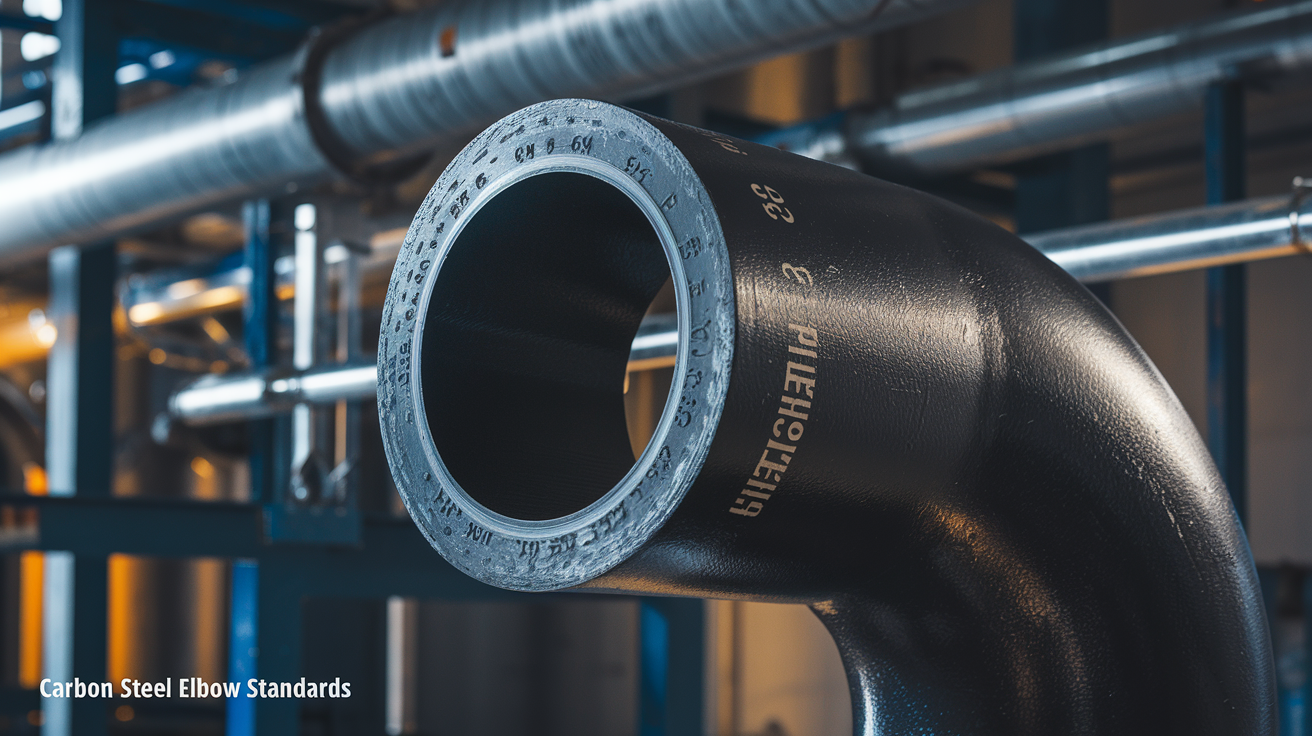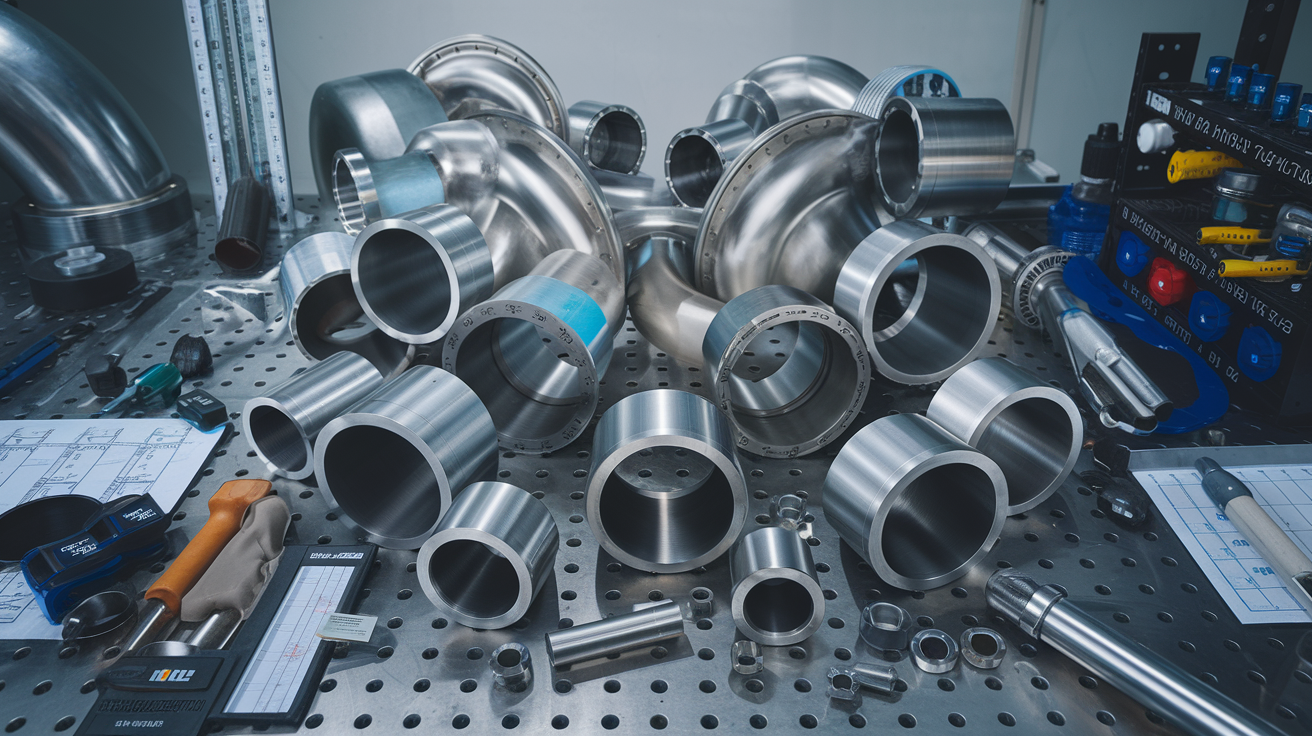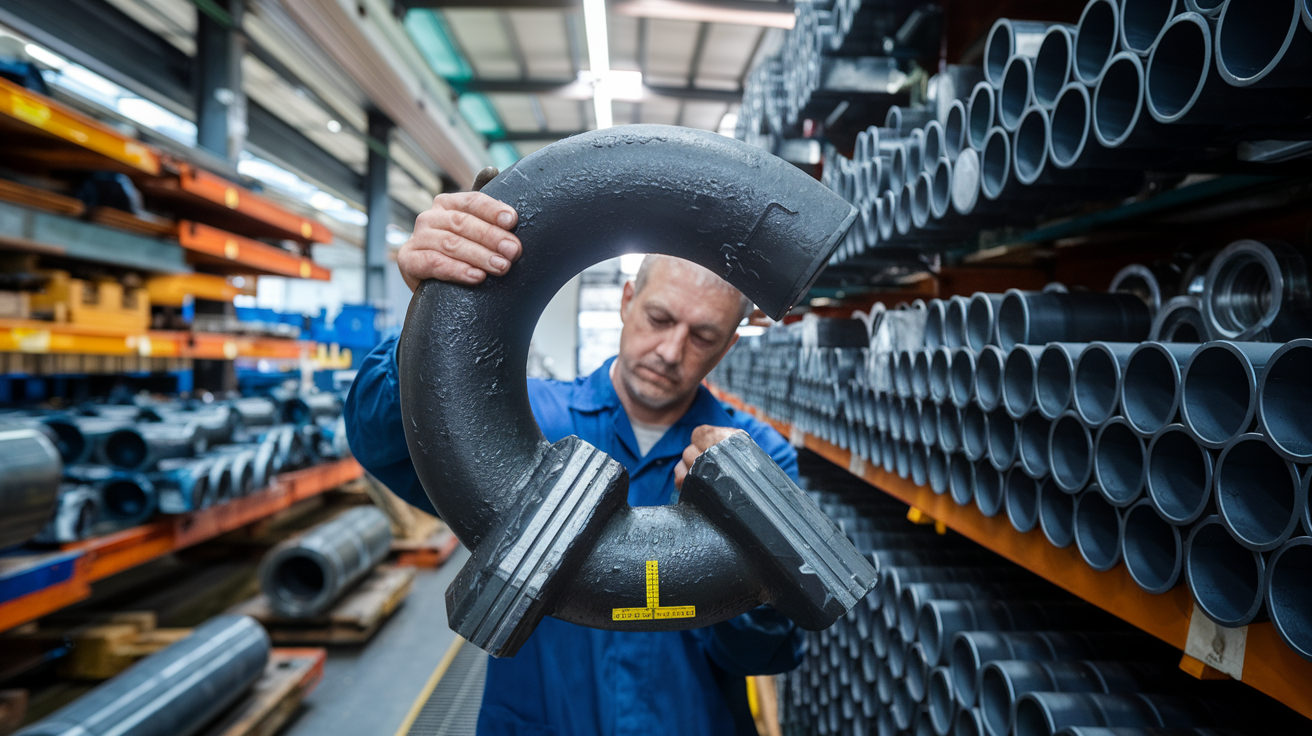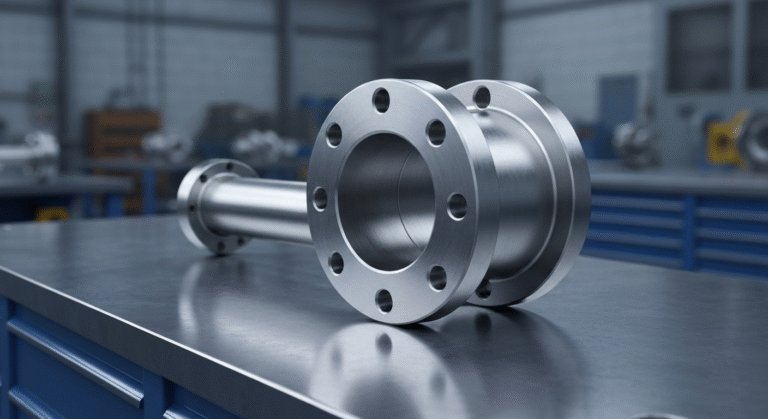-
中国河北省滄州市孟村県銀庄工業区

炭素鋼エルボ選択の究極ガイド
The Critical Role of Carbon Steel Elbows in Modern Piping Systems
When designing industrial piping systems that handle high-pressure fluids under varying temperature conditions, the humble carbon steel elbow might seem like just another component. Yet these precision-engineered fittings are crucial lifelines that redirect flow, absorb thermal expansion, and maintain structural integrity throughout complex networks. Without properly specified and manufactured elbows, even the most robust piping systems would quickly fail under operational stress.
From long-radius to short-radius varieties, from 45° to 180° configurations, carbon steel elbows must adhere to rigorous standards like ASTM A106 and ASME B16.9 to ensure safety and reliability. Their wall thickness, particularly at the inside radius where weaknesses commonly develop, can mean the difference between operational excellence and catastrophic failure. In this comprehensive guide, we’ll explore everything from understanding specifications and classifications to selection criteria and maintenance practices that will help you maximize the performance and longevity of these essential components in your piping systems.
Understanding Carbon Steel Elbow Specifications

Understanding Carbon Steel Elbow Specifications
Carbon steel elbows are critical components in industrial piping systems, requiring precise specifications to ensure safety and performance. Understanding these specifications is essential for professionals involved in construction management, equipment installation, and industrial maintenance.
A. Material Standards (ASTM A106 and ASME A234)
Carbon steel elbows typically conform to established industry standards, with ASTM A106 and ASME A234 being the most prominent. ASTM A106 addresses seamless carbon steel pipe specifications suitable for high-temperature service, while ASME A234 covers wrought carbon steel fittings. These standards ensure consistency in material composition, manufacturing processes, and quality control.
In the current low-carbon economy, manufacturers face challenges in meeting these standards while reducing environmental impact. As Lisa Sun notes in her articles on carbon steel elbow manufacturing, adherence to these material standards is non-negotiable for ensuring the structural integrity of piping systems.
B. Temperature and Pressure Considerations
Carbon steel elbows must withstand varying temperature and pressure conditions depending on their application. Specifications typically include:
- Maximum and minimum operating temperatures
- Pressure ratings at different temperatures
- Thermal expansion coefficients
- Stress resistance under pressure fluctuations
These considerations directly impact the performance and longevity of carbon steel pipe fittings. Industry experts emphasize that properly specified elbows contribute significantly to cost savings through optimized system design and reduced maintenance requirements.
C. Essential Material Properties for Safety
Safety is paramount when specifying carbon steel elbows. Key material properties that must be considered include:
- Tensile strength
- Yield strength
- 硬度
- 耐衝撃性
- 延性
- Chemical composition
These properties determine how the carbon steel elbow will respond under stress and environmental conditions. Identifying high-quality carbon steel elbows requires careful evaluation of these properties against established safety thresholds.
One common issue in industrial settings is leakage at elbow joints, which can be prevented by ensuring proper material specifications. The reference material highlights successful case studies where attention to material properties has prevented system failures and enhanced operational safety.
With this comprehensive understanding of carbon steel elbow specifications, we can now explore the various types and classifications of carbon steel elbows, which will help in selecting the right component for specific applications.
Types and Classifications of Carbon Steel Elbows

Types and Classifications of Carbon Steel Elbows
Now that we’ve explored the specifications of carbon steel elbows, let’s examine the various types and classifications that are available for different piping system requirements.
A. Long-radius (R = 1.5D) vs. short-radius (R = 1.0D) elbows
Carbon steel elbows are classified based on their centerline radius. Long-radius elbows have a centerline radius equal to 1.5 times the nominal pipe diameter (1.5D), while short-radius elbows have a centerline radius equal to the nominal pipe diameter (1.0D).
Long-radius carbon steel elbows are preferred in systems where fluid flow efficiency is critical, as they create less turbulence and pressure drop. Short-radius elbows, being more compact, are typically used where space constraints exist but are generally less efficient for flow.
B. Classification by angle (45°, 90°, and 180° elbows)
Carbon steel elbows are available in various angles to accommodate different directional changes in piping systems:
- 90度エルボー: The most common type, used for perpendicular directional changes in piping systems. These are essential for butt weld, socket weld, and threaded connections.
- 45度肘: Used for more gradual directional changes, reducing turbulence and pressure loss compared to 90-degree turns.
- 180-degree elbows: Also known as return bends, these create a complete reversal in flow direction.
C. Reducing, male, and female elbows and their applications
Beyond standard configurations, carbon steel elbows are available in specialized formats:
- Reducing elbows: Feature different inlet and outlet diameters, eliminating the need for separate reducer fittings.
- Male elbows: Have threads on the outside, designed to connect with female threaded components.
- Female elbows: Contain internal threads, designed to accept male threaded components.
These specialized carbon steel pipe fittings are manufactured according to standards such as ASTM 234 WPB, WPC, and A420 WPL6, ensuring quality and compatibility across piping systems.
The manufacturing process for these carbon steel elbows typically involves either welding polygonal shells and using pressure to form the tubular shape or by heating and molding seamless or welded pipes into the desired elbow configuration. The high carbon content in these fittings provides increased strength and hardness, though with reduced plasticity compared to other alloy steels.
With this understanding of the types and classifications of carbon steel elbows, we’ll next explore the technical requirements and manufacturing standards that ensure these components meet industry specifications and performance criteria.
Technical Requirements and Manufacturing Standards
Technical Requirements and Manufacturing Standards
Now that we have explored the various types and classifications of carbon steel elbows, it’s essential to understand the technical requirements and manufacturing standards that ensure their quality and reliability in industrial applications.
Radius of Curvature Tolerances and Calculations
The manufacturing of carbon steel elbows follows precise technical specifications regarding radius of curvature. In the production process, particularly when using the method of transforming polygonal shells into tubular shapes, maintaining consistent radius measurements is critical. The technological advancements in welding have enabled manufacturers to create carbon steel elbows of various sizes with accurate curvature specifications, even for larger diameters.
Wall Thickness Requirements, Especially at Inside Radius
Wall thickness is a crucial parameter in carbon steel elbow manufacturing, particularly at the inside radius where stress concentration occurs. Carbon steel, characterized by its high carbon content, offers increased strength and hardness but reduced plasticity compared to other alloy steels. This characteristic makes the control of wall thickness during the manufacturing process especially important.
When carbon steel pipes are heated and molded into elbow shapes (the second manufacturing method mentioned in references), careful attention must be paid to ensure the wall thickness remains within acceptable tolerances, particularly at the inside radius where material thinning can occur during the bending process.
ASME B16.9 Dimensions and Tolerance Specifications
The ASTM 234 WPB, WPC, and A420 WPL6 standards govern carbon steel elbows, with ASME B16.9 providing specific dimensions and tolerance specifications. These standards ensure that carbon steel pipe fittings maintain consistency across different manufacturers and applications.
The specifications cover critical parameters including:
- Dimensional tolerances for various elbow angles (such as the common 90-degree and 45-degree carbon steel elbows)
- End preparation requirements for butt weld, socket weld, and threaded connections
- Surface finish requirements
- Material composition verification procedures
With this comprehensive understanding of technical requirements and manufacturing standards, we can now move forward to examining the selection criteria for carbon steel elbows, which will help you choose the right fitting for your specific application needs.
Selection Criteria for Carbon Steel Elbows

Selection Criteria for Carbon Steel Elbows
Now that we have covered the technical requirements and manufacturing standards, it’s crucial to understand how to select the appropriate carbon steel elbows for your specific application. Proper selection ensures optimal performance, safety, and longevity of your piping system.
Key factors for choosing appropriate elbows
When selecting carbon steel elbows, several critical factors must be considered:
Pipe material compatibility: The elbow material should be compatible with the existing piping system to prevent galvanic corrosion or other material interactions.
Environmental conditions: Assess the operating environment, including exposure to corrosive substances, weather conditions, and temperature fluctuations.
Application requirements: Different industries have varying needs. Oil and gas applications may require high-carbon content elbows for greater tensile strength, while other applications might benefit from low-carbon variants offering better malleability.
Type selection: Choose between long radius elbows (radius 1.5 times the pipe diameter), short radius elbows (radius equal to pipe diameter), or reducing elbows based on space constraints and flow requirements.
Installation considerations: Evaluate the expertise required for proper installation, including cutting, beveling, and welding processes.
Pressure rating considerations
Pressure ratings are among the most critical factors when selecting carbon steel elbows:
高圧システム: For applications in oil and gas or petrochemical industries with high-pressure requirements, high-carbon content elbows offer superior tensile strength and durability.
低圧システム: Low-carbon steel elbows provide adequate performance for less demanding applications while offering better malleability during installation.
Pressure fluctuations: Consider whether the system will experience consistent pressure or frequent fluctuations, which may affect the long-term integrity of the fittings.
Size and compatibility requirements
Size and compatibility considerations ensure proper fit and function:
Pipe diameter: Match the elbow diameter precisely to the connecting pipes for seamless integration.
Wall thickness: Select appropriate wall thickness based on pressure requirements and structural considerations.
Connection type: Ensure the elbow’s end preparation (beveled, threaded, or flanged) matches the joining method used in the piping system.
Flow characteristics: Consider how the elbow’s geometry will affect fluid flow, especially in systems where pressure drop or turbulence must be minimized.
Dimensional accuracy: Verify that the elbow meets dimensional standards to ensure proper alignment with connecting components.
With these selection criteria in mind, next, we’ll see how proper maintenance and protection of carbon steel elbows can extend their service life and maintain system integrity, particularly in challenging environments where corrosion protection becomes essential.
Maintenance and Protection of Carbon Steel Elbows

Maintenance and Protection of Carbon Steel Elbows
Now that we’ve examined the selection criteria for carbon steel elbows based on factors like pipe material, diameter, thickness, and operational conditions, it’s equally important to understand how to maintain these crucial pipe fittings for optimal longevity and performance.
Inspection Procedures for Ensuring Reliability
Regular inspection of carbon steel elbows is essential to maintain system integrity, particularly in high-pressure applications such as oil and gas or petrochemical industries. Inspection procedures should include:
- Visual examination for surface defects, cracks, or signs of wear
- Thickness testing to identify potential thinning due to operational stresses
- Pressure testing to ensure connections remain secure and leak-free
- Documentation of inspection findings to track deterioration patterns over time
These procedures are especially critical for elbows installed in harsh environments where they face constant stress from fluid pressure and temperature fluctuations.
Corrosion Prevention Through Coating Processes
Carbon steel elbows, while durable, are susceptible to corrosion when exposed to moisture or corrosive substances. Effective coating processes include:
- Application of protective paints specifically designed for carbon steel pipe fittings
- Galvanization to create a sacrificial zinc layer that protects the underlying carbon steel
- Epoxy coatings that provide a barrier against corrosive elements
- Regular reapplication of protective coatings based on environmental exposure levels
Proper coating not only extends the service life of carbon steel elbows but also maintains their structural integrity in demanding industrial settings.
Best Practices for Long-Term Performance
To ensure carbon steel elbows deliver reliable long-term performance:
- Implement a scheduled maintenance program aligned with operational demands
- Train installation technicians in proper cutting, beveling, and welding techniques
- Monitor operational parameters to prevent exceeding pressure and temperature thresholds
- Replace elbows showing significant wear before failure occurs
- Keep detailed records of maintenance activities and replacement cycles
Following these best practices helps maintain the effectiveness of carbon steel elbows in fluid transfer systems, reducing downtime and preventing costly leaks or system failures.
Proper maintenance and protection of carbon steel elbows ultimately preserves their durability and corrosion resistance, ensuring they continue to perform their essential function of connecting pipe segments securely while controlling pressure and preventing leaks throughout their service life.

Carbon steel elbows play a critical role in piping systems, with their specifications, classifications, and technical requirements governed by stringent ASTM and ASME standards. Whether selecting long-radius or short-radius elbows, understanding the proper material type, size, and pressure ratings is essential for system integrity. The radius of curvature and wall thickness, particularly at the inside radius, are vital considerations for preventing potential weaknesses and ensuring reliable performance.
Proper maintenance, regular inspection, and appropriate protective coatings are necessary to extend the service life of carbon steel elbows, especially in high-pressure environments. By adhering to industry standards and implementing sound selection criteria, engineers and procurement professionals can ensure their piping systems operate safely and efficiently. Remember that quality control during manufacturing and timely service from reputable suppliers are the final links in creating dependable piping networks that withstand the test of time and operational demands.



